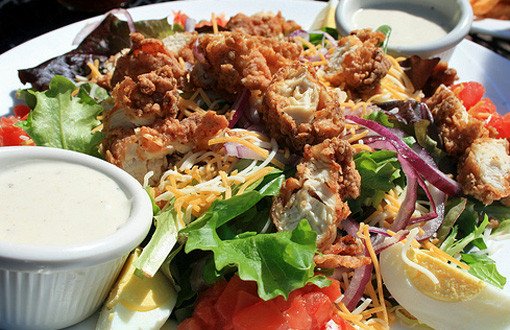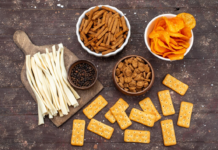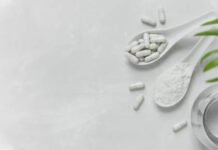
“Eating salad” is basically shorthand for healthy, or for going on a diet, or for (we’re guessing) some sort of depraved sex act. So if you’re thinking of trying to lose weight, chances are you’re also thinking about eating more salads. Which is great! Unless you screw up those salads by making them with unhealthy ingredients.
It’s entirely possible. Maybe you’ve heard that some of the salads McDonald’s offers as “healthy” options are actually fattier and/or more caloric than several burgers and other items on their menu. Well, that’s because they’re made with several not-very-good-for-you ingredients.
Also: Super Foods For More Energy Now
Done right, however, salads can offer with countless nutritional benefits: high fiber, lots of vitamins and minerals and antioxidants, and even plenty of protein. While you’re best off with ingredients that can be grown or picked — onions, peppers, broccoli, avocados, carrots, tomatoes, radishes, cucumbers, asparagus, etc. — you’ll no doubt be extremely tempted to reach for these other five ingredients that can wind up negating all the healthy benefits of your salad.
1. Cheese
A quarter cup of cheese adds about 100 calories to your salad. You may think low-fat or no-fat cheese is much better for you, but it still has calories — plus it’s had plenty of salt and artificial flavors pumped into it. So your best bet is to use normal, full-fat cheese, but to exercise portion control. It sounds counterintuitive, but regular cheese is super satiating and may help you feel fuller longer.
2. Croutons
Croutons are typically made from processed bread and contain virtually no nutritional value. However, they add plenty of fat and calories. While you’re at it, skip the sesame sticks and crispy noodles. A better, healthier substitute would be unsalted walnuts, flax seeds, sunflower seeds, or chopped bell peppers. You’ll still get the crunch, but you won’t get the 100 calories per half cup like you get with croutons.
3. Bacon
People will not shut the hell up about bacon. Yes, it’s delicious and it has its place — on burgers, next to eggs, etc. But maniacs want to put it everywhere, including on their penises (seriously, there are bacon condoms) and, of course, on salads. Now, we’re not saying bacon doesn’t have any place on a salad; it’s a traditional ingredient in a Cobb, for instance. But adding bacon to your greens also adds fat, calories, salt, and preservatives; just 2 tablespoons of bacon bits come with 50 calories and 2 grams of fat. So use them sparingly.
4. Fatty salad dressing
Ranch, blue cheese, and creamy Italian dressings all taste amazing, but they’re typically loaded with calories, sugar, and fat. Ranch, for example, has about 146 calories and 15 grams of fat per two tablespoons. So when you douse your salad with dressing, you’re counterbalancing any health benefits. If you’re dining out, request a low-fat dressing and/or ask for it on the side. At home, try making your own; it’s easy. Here’s a recipe for balsamic herb vinaigrette:
• 4 cloves of garlic (minced)
• 3 tablespoons balsamic vinegar
• 1 teaspoon dried oregano leaves or 1 tablespoon fresh oregano (minced)
• 1 teaspoon dried thyme leaves or 1 tablespoon fresh thyme (minced)
• 1 teaspoon Dijon mustard
• 1 teaspoon black pepper
Whisk it all together. Drizzle on salad.
5. Fried … anything
Adding grilled chicken on your salad ups the protein content; adding fried chicken strips or other fried foods adds more salt and calories, and can often cause inflammation in the body (from the oils used). And since the vast majority of Americans take in way more than the 1,000 mg of sodium that is recommended by the USDA, leave the salt-packed processed and cured meats out as well.



